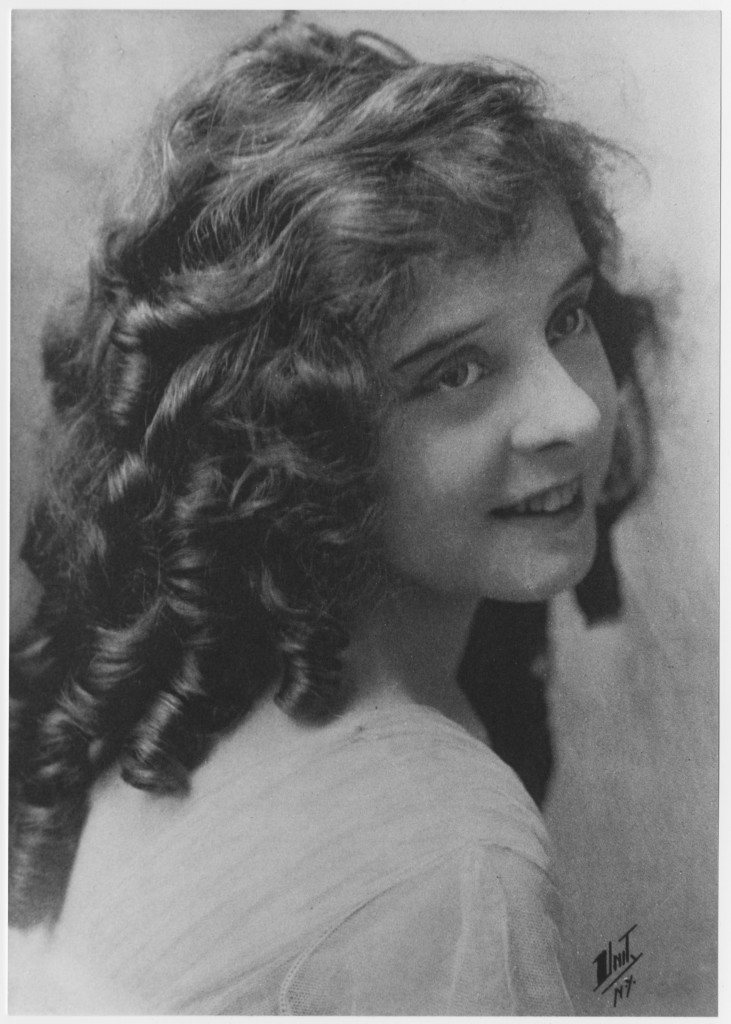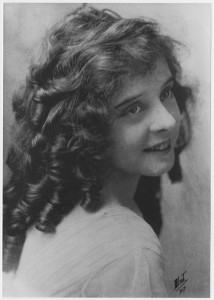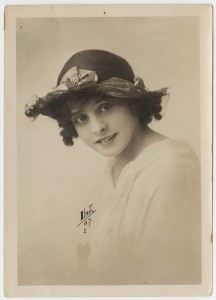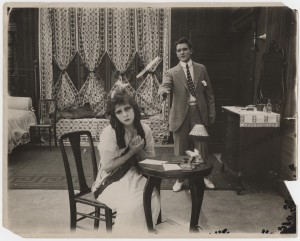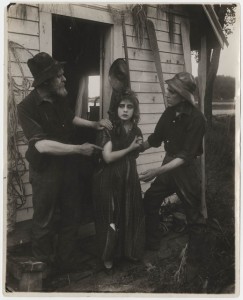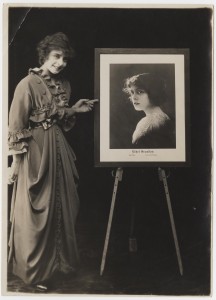With the success of Traffic in Souls (1913), the fan and trade press recognized Ethel Grandin as a leading star of Carl Laemmle’s Independent Motion Picture (IMP) Company. The subsequent articles on Grandin tell the story of her early career, citing her family history on the New York stage as well as her debut at age six with Joseph Jefferson in “Rip Van Winkle.” Shortly before acting in films, she performed in Chauncey Olcott’s theatre company alongside Mary Pickford’s sister Lottie. Grandin’s association with the Pickford family prompted her to enter the film industry soon after Mary did. A 1914 article in the Green Book Magazine notes several parallels between Pickford and Grandin—from physical appearance to career trajectory—and suggests that Grandin “stepped into little Mary’s shoes” at IMP in 1911 (256–257).
When Thomas Ince, then a director at IMP, left New York for California in 1911, he took Grandin with him as his lead actress and Ray Smallwood as his cinematographer. Smallwood and Grandin married the following year and worked together on many productions throughout her career. In California, Grandin starred in the Bison 101 Ranch films, created to satisfy increasing demand for images of the Western landscape. A full page article in the Moving Picture World praises Grandin and Ince’s first California production, War on the Plains (1912), for landscapes “sublime in their grandeur” (298). The success of the Bison films renewed Carl Laemmle’s interest in Grandin and Smallwood, and he requested that they return to IMP in New York. A 1913 article in Moving Picture World noted a combination of personal and professional reasons for their return, suggesting that Grandin agreed to move back primarily to be closer to her ailing mother (1237). Grandin, several months’ pregnant at the time of the move, began working for Laemmle soon after the birth of her son. Her work from this second period at IMP was by and large comprised of one- and two-reel comedies, although the six-reel feature film Traffic in Souls received more publicity than any of these shorts.
Hoping to capitalize on some of her recent celebrity, Grandin and Smallwood formed the Grandin Films label out of the Smallwood Film Corporation, which was founded by Ray’s brother, Arthur Smallwood, in 1913. One could say that the couple followed the lead of Marion Leonard and her husband Stanner E. V. Taylor, who started Gem Motion Picture Company in 1911, and indeed, one of Grandin’s earliest roles was in the extant Gem production, The Bachelor Girl’s Club (1913).
Grandin’s level of involvement in establishing the company is not entirely clear, but the legal documents in the George Kleine Collection do name her as a partner in these ventures along with Ray and Arthur Smallwood. In June 1914, the Moving Picture World announced Grandin and Smallwood’s departure from Universal, into which IMP was absorbed in 1912 (1706). The new production company, however, was not mentioned in Moving Picture World until December 1914 (1538).
In an unpublished interview in 1975, Grandin described how in the summer of 1914 they had begun shooting films under the glass ceiling of a converted Turkish bath in midtown Manhattan. The Moving Picture World profile of Grandin, published in December of the same year, announced weekly releases beginning with The Adopted Daughter (1914). Grandin and Smallwood began production on several one-reel dramatic films under the Grandin Films label, but they ran into financial trouble before their company even made it off the ground. The trade papers provide a few clues as to why their company floundered. In her Green Book Magazine interview of 1914, Grandin predicts the return of the one-reel film: “The public doesn’t like the five- and six-reel story nearly as well as the concentrated short-length pictures that were produced three years ago…. The future of the motion picture lies in the good, meaty one-reel picture” (257). Producing mainly short subjects, Grandin Films could not adjust to the market for features. Since feature production far exceeded the company’s resources, Grandin’s support for the one-reeler may have been her way of making a virtue out of necessity.
In an attempt to save their filmmaking operation, Grandin and Smallwood signed a contract with Chicago film importer George Kleine for exclusive rights to their films. They would provide a regular supply of films, Kleine would hold copyright in his name, and the General Film Company, distribution arm of the Motion Picture Patents Company, would distribute and promote the films. By August 1915, the Moving Picture World announced that Smallwood was to direct “a long list” of films written specifically for Grandin (983). This second venture, too, quickly collapsed. The Kleine papers at the Library of Congress detail how this business relationship deteriorated into bitter litigation. From reading the Smallwood case file, one gets the impression that Kleine’s initial pleasure with the terms of his agreement with Grandin and Smallwood soured after he was forced to continually advance them money to finish the films that they had agreed to produce on their own.
Moreover, Grandin and Ray Smallwood had left brother Arthur Smallwood out of their deal with Kleine. When Arthur filed an injunction against the release of the films produced under this new agreement, Kleine withdrew the Grandin films from circulation. Grandin and Smallwood quickly filed suit against Kleine for damages. The fact that Kleine had a stronger case led him to speculate on why Grandin and Smallwood filed suit against him. Kleine claims, at the end of his narrative of their dealings written for his attorneys, that one of Grandin’s directors in 1915 tipped her off to a recent settlement offered by Kleine simply to avoid litigation. He says of Grandin and Smallwood in November of 1916, “[I] am inclined to believe that this suit is a blackmailing scheme based upon the assumption that I would rather compromise than fight and not upon the merits of their claim” (13). Kleine partly implicates Grandin here, but he suggests that the main blame lies with Smallwood. In the introduction to the letter, Kleine describes Grandin as “a hard working actress” who went along with Smallwood’s “will to be a trickster within his limited mental capacity” (2). Another interpretation of the legal files and Kleine’s deposition is made by Karen Mahar who understands the brothers as unscrupulous in their business dealings and as having taken advantage of Grandin’s stardom, and Kleine as seeing the actress as a victim (Mahar 2006, 73-74).
After her production business fell apart, Grandin took few acting jobs, but Moving Picture World notes in 1916 that she is to be featured in the independently produced The Crimson Stain Mystery (1529). Subsequently, Photoplay announced what they saw as her “comeback” early in 1917 with The Crimson Stain Mystery, a fifteen-part serial, of which thirteen chapters are extant (137). This crime serial, which also featured former Vitagraph star Maurice Costello, did garner enough publicity to revive her career, but from her credits it appears that she remained in partial retirement. After a few more films for S-L Productions (an independent, short-lived company) in the early 1920s, she retired completely. Since Grandin retired in her late twenties and died at ninety-four, she had at least sixty years to consider her career, and even to organize her papers, which have been deposited at the University of Wyoming.
See also: Marion Leonard, Mary Pickford

